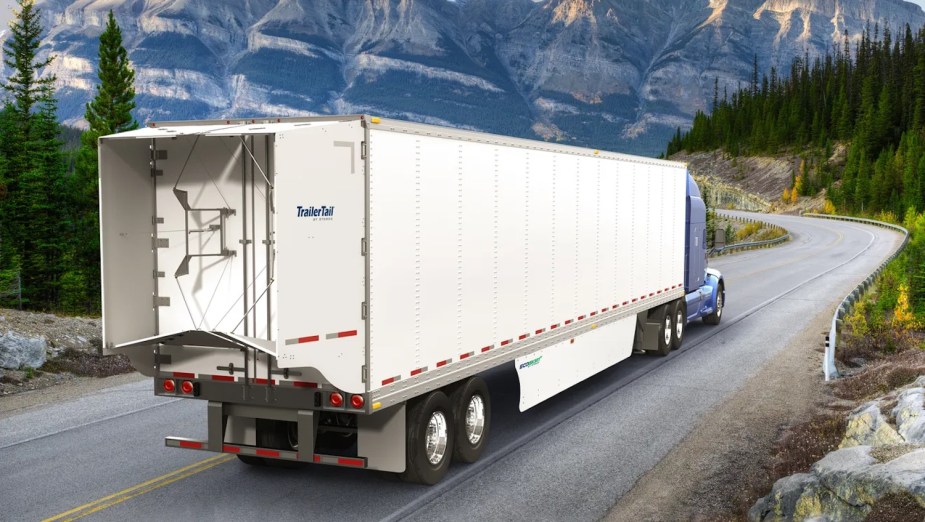
Why Do Semi-Truck Drivers Leave Their Engines Running?
If you’ve ever stopped at a truck stop, you know it’s a completely different world than what you find at a typical gas station. You can hear the rumble of semi-trucks lined up on one side of the parking lot with engines running, but most truckers aren’t inside the cabs. These truckers leave their engines idling while they visit the truck stop for food, showers, restroom breaks, and general downtime. Why do truckers leave their semis running when parked at a truck stop?
Three main reasons why semi-truck drives leave their engines running

That line of diesel-powered semi-trucks on the far side of the parking lot is burning a lot of fuel and emitting harmful chemicals into the air. Why would these truckers keep the engines running? The three main reasons for this are:
- Weather conditions
- Economic Pressures
- Old Habits
What does the weather have to do with leaving the engine running?
In cold weather, the engine and fuel tanks of semi-trucks need to stay warm. Many truckers feel the pressure to make their delivery on time, and if their truck won’t start when it’s cold outside, getting the truck going again can be costly. Jump-starting an 18-wheeler isn’t like jumping your car or SUV. It can cost around $100 to get the truck going again if this is all that’s required. Some truckers don’t want to take the chance and will keep the engine running.
Do truckers need power for the living space in their semis?

Yes, which brings us another reason truckers keep the engine idling. The power from the engine runs the heaters, lights, and other electrical devices. Many truckers have a small living space with all the necessary amenities for their time on the road. This means running the truck to avoid running down the batteries.
Do the idling semi-trucks impact the air quality around truck stops?
Yes, the air quality around most truck stops is much worse than when you get away from them, and the idling trucks are to blame. The number of hours of the nearly 1.28 million long-haul diesel trucks on the road means billions of hours with these trucks idling each year.
The American Trucking Association reports that burning a gallon of diesel at idle emits 2.5 times the number of pollutants into the air compared to when its burned while driving. Considering the average semi covers 130,000 miles per year, translating to nearly 6,316 hours on the road, only 3,095 of which are driving hours. The rest of the time, 3,221 hours, these trucks could be idling at truck stops.
What do semi-truck manufacturers recommend?

Semi-trucks do not need to be at idle, except when the weather is cold. In fact, manufacturers recommend running the engine for five minutes to allow it to cool down once parked at a truck stop. When the five minutes had passed, the driver can shut the truck down. Unfortunately, this is where the old habits come in, and many truckers don’t wait five minutes and turn off the truck. They leave the semi idling and head into the truck stop to shop, shower, or eat.
Is there a money-saving solution that won’t burn diesel fuel?
A proposed solution by Edison Electrical Institute (EEI) in Washington, D.C., could be the solution to the idling and emissions problem. They suggest that truck stops electrify the semi-truck parking spaces and that truckers outfit their rigs with the necessary gear to allow their living spaces to run on electricity.
The items that could outfit a truck would cost between $1,500 and $2,000 and include:
- Engine heaters
- Fuel tank heaters
- Cab heating and cooling devices
- Automatic shutoff to kill the engine five minutes after stopping
Considering that idling a truck cost nearly $3,400 per year, the savings to a trucker or the trucking company could be thousands of dollars over the life of a semi-truck.
The cost to the truck stop to add the electrical connections would be around $1,500 per outlet, and the payback period could take up to 16 months.
This solution has promise and could improve the air quality around truck stops, end semi-truck idling, and give truckers the peace of mind that their semi will start up when it’s time to get back on the road.
Next, learn more about the only modern pickup with two diesel fuel tanks, or watch this semi-trucks idling video below:



